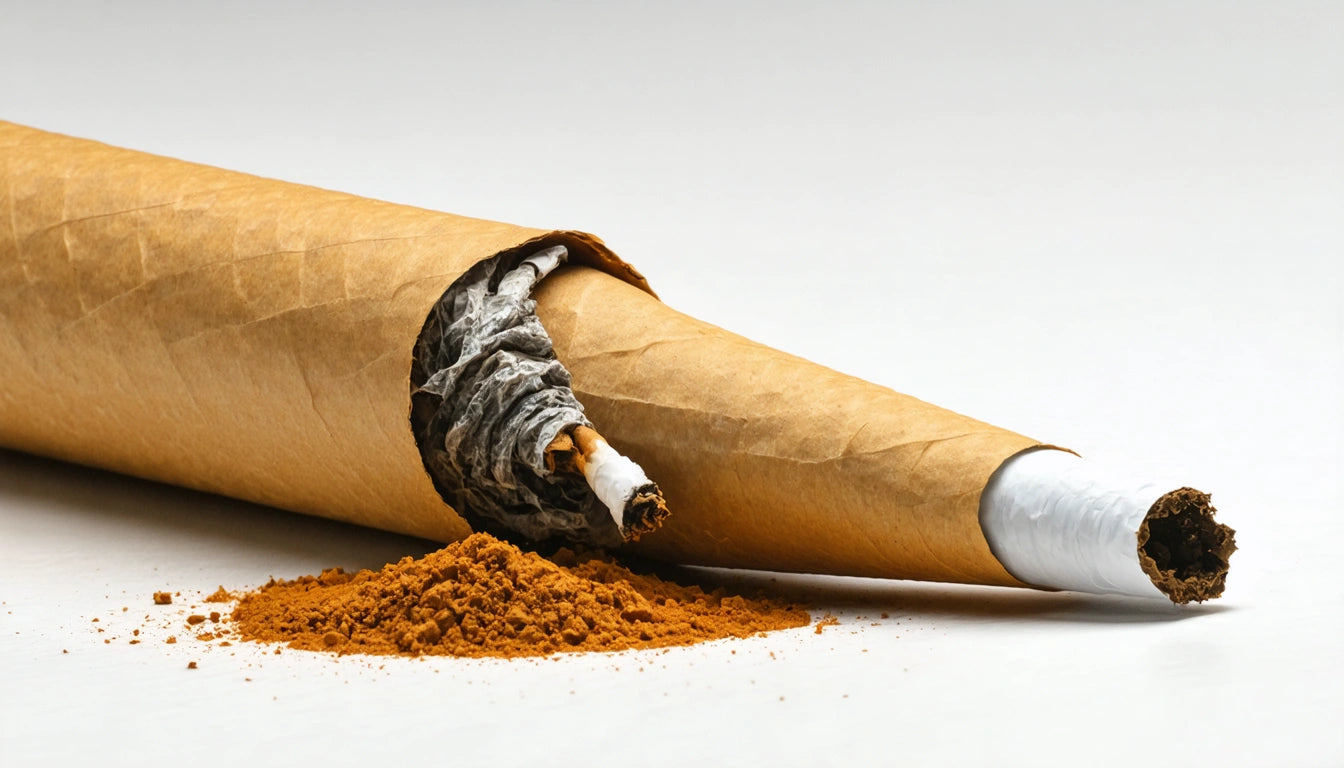Table of Contents
Mastering the Art of Rolling RAW Cones: Tips and Techniques
Rolling the perfect RAW cone is a skill that combines precision, patience, and practice. Whether you're new to rolling or looking to refine your technique, this comprehensive guide will walk you through everything you need to know about how to roll a RAW cone that burns evenly and delivers a superior smoking experience.
RAW Cone Basics: Understanding Your Materials
Before diving into the rolling process, it's essential to understand the materials you're working with. RAW papers are made from unbleached, natural fibers that provide a clean smoking experience. They're thinner than many other rolling papers, which requires a gentle touch when handling.
For a successful roll, you'll need:
- RAW rolling papers (classic or organic hemp)
- RAW filter tips (also called crutches)
- Your ground herb of choice
- A clean, flat surface for rolling
- A grinder for consistent texture
The quality of your materials directly impacts the smoking experience. As highlighted in this guide on choosing the best cones, RAW papers are popular for their minimal impact on flavor and clean burn characteristics.
Preparing Perfect Filter Tips for RAW Cones
Learning how to roll a RAW cone filter tip properly is crucial for stability, airflow, and preventing plant material from entering your mouth during use.
Filter Tip Folding Technique:
1. Take a RAW filter tip card and fold about 1/4 inch at one end.
2. Create an accordion-like pattern by making 2-3 more folds back and forth.
3. Roll the remaining straight portion around these folds to create a cylindrical shape.
4. The filter should have enough tension to maintain its shape without being too tight or too loose.
A well-made filter tip provides structure to your cone and improves airflow. According to experts on using filters with RAW papers, the ideal filter has enough resistance to provide structure but allows smooth airflow.
Step-by-Step Rolling Technique for RAW Cones
Now that your filter is ready, here's how to roll a RAW cone from start to finish:
1. Paper Preparation
Place your RAW paper on a flat surface with the gum strip (the adhesive edge) facing up and away from you. Position the filter tip at one end of the paper.
2. Herb Distribution
Evenly distribute your ground herb along the crease of the paper, using less near the filter and gradually more toward the opposite end to create the cone shape.
3. The Tuck and Roll
With your thumbs positioned inside the crease, gently roll the paper back and forth to evenly distribute the herb. Then, tuck the non-adhesive edge of the paper around the filter and herb, rolling upward toward the adhesive strip.
4. Sealing the Cone
Once rolled, lick the adhesive strip and seal the cone from the filter end to the tip, applying gentle pressure to ensure proper adhesion.
5. Packing and Finishing
Use a small tool or the end of a pencil to gently pack down the herb from the open end. Twist the excess paper at the tip to seal the cone until ready for use.
For a visual demonstration of these techniques, this resource on rolling cone joints provides detailed illustrations of each step.
Common Mistakes When Rolling RAW Cones
Even experienced rollers can make these common errors when learning how to roll RAW cone:
- Overpacking: Too much herb makes the cone too tight, restricting airflow and causing an uneven burn.
- Uneven distribution: Failing to create a proper cone shape leads to inconsistent burning.
- Loose filter: A poorly rolled filter tip can slip out or allow herb to enter your mouth.
- Excessive moisture: Over-wetting the adhesive strip can damage the paper's integrity.
- Rushing the process: Patience is key to mastering how to roll RAW cone techniques.
Advanced Techniques for Perfect RAW Cones
Once you've mastered the basics of how to roll a RAW cone, consider these advanced techniques:
Double Filter Method
For extra stability, especially in larger cones, use two filter tips side by side. This provides better structural support and can improve airflow in larger rolls.
Backrolling Technique
Also known as the Dutch or reverse roll, this technique involves flipping the paper so the adhesive strip faces down toward the table. After rolling, you only need the adhesive strip while the excess paper is torn or burned away, resulting in less paper and a purer taste.
Pre-shaping Your Cone
Before adding herb, pre-shape your paper into a cone with the filter in place. This creates a guide for herb placement and makes the final rolling process smoother.
For those interested in further refining their technique, this comprehensive guide to rolling techniques covers additional methods and tools that can elevate your rolling skills.
Safety Considerations and Responsible Rolling Practices
While mastering how to roll RAW cone techniques is important, responsible practices are equally crucial:
Store your rolling supplies properly in appropriate containers. According to safety guidelines on proper packaging, keeping cannabis products in child-resistant packaging is essential for preventing accidental access by children. Many jurisdictions require cannabis products to be stored in containers that are significantly difficult for children under five to open.
Additionally, consider these responsible practices:
- Roll in appropriate settings away from prohibited areas
- Be mindful of local regulations regarding consumption
- Dispose of any waste materials properly
- Store finished cones in odor-proof, child-resistant containers
For those who find hand-rolling challenging, pre-rolled cones are an excellent alternative. This guide on using RAW pre-rolled cones provides tips on properly filling and packing pre-made cones for a similar experience without the rolling skills required.
Practice Makes Perfect: Developing Your Personal Rolling Style
Mastering how to roll a RAW cone takes time and practice. Don't be discouraged by initial attempts that may not meet your expectations. Each roll improves your technique and understanding of the materials. Many experienced rollers develop their own signature style and modifications to the basic techniques presented here.
Remember that the perfect roll combines proper technique with personal preference. Some prefer tighter cones for slower burns, while others prefer looser rolls for easier draws. Experiment with different filter lengths, cone angles, and packing densities to find what works best for your specific needs.
With consistent practice and attention to detail, you'll soon be rolling RAW cones that not only function perfectly but also showcase your personal rolling style and craftsmanship.











Leave a comment
All comments are moderated before being published.
This site is protected by hCaptcha and the hCaptcha Privacy Policy and Terms of Service apply.